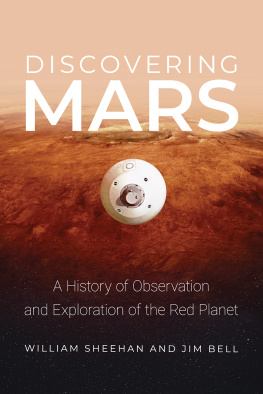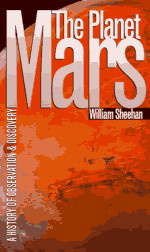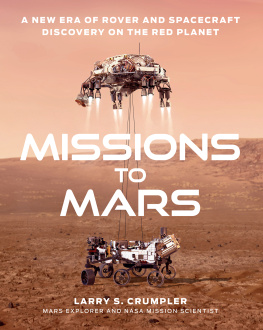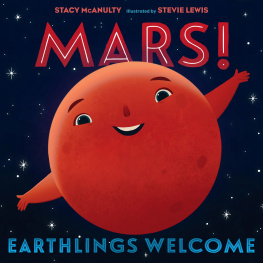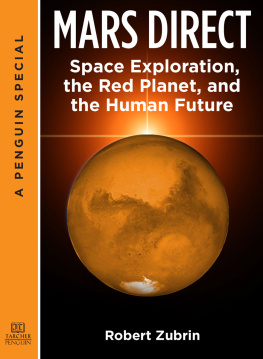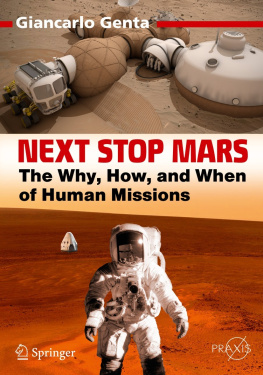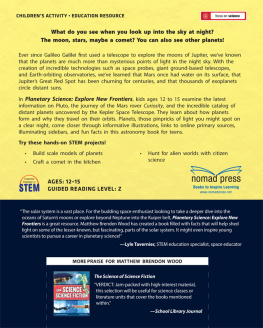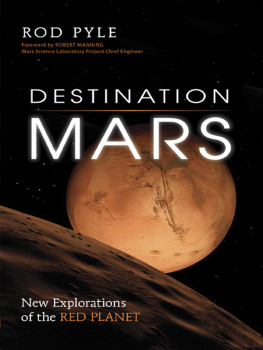
Praise for Discovering Mars
Discovering Mars provides a breathtaking panorama of the human quest to understand our neighboring planet, starting from ancient times through the era of planetary astronomy from Galileo through the 1950s, and through the era of space missions all the way to the 2020s. Authors Sheehan and Bell are the perfect pair to present this journey through time and space, with Sheehans perspective as a science historian and philosopher, and Bells perspective as a modern-day explorer leading the camera teams on NASAs rovers.
Roger C. Wiens, Los Alamos National Laboratory
An extraordinary chronicle of our centuries-old captivation with Mars, enticingly rich in detail... Sheehan and Bell have penned a sweeping, immersive book that takes the reader right to the doorstep of modern exploration.
Sarah Stewart Johnson, author of The Sirens of Mars: Searching for Life on Another World
Sheehan and Bell expertly distill the history, science, and technology of planetary exploration into a refreshing deep dive into the realm of Mars research. It is a joy to read for both the curious observer and the planetary scientist alike.
Amy J. Williams, University of Florida, and team member on NASAs Curiosity and Perseverance rover missions
Bill Sheehan and Jim Bell lead an exhilarating voyage to understand Mars. The journey is as much about human imagination and eccentricity as it is about scientific data and observation, and the team of Mars historian Sheehan and planetary scientist Bell expertly show the way. Never has armchair exploration been so provocative!
Kevin Schindler, Lowell Observatory historian
Discovering Mars
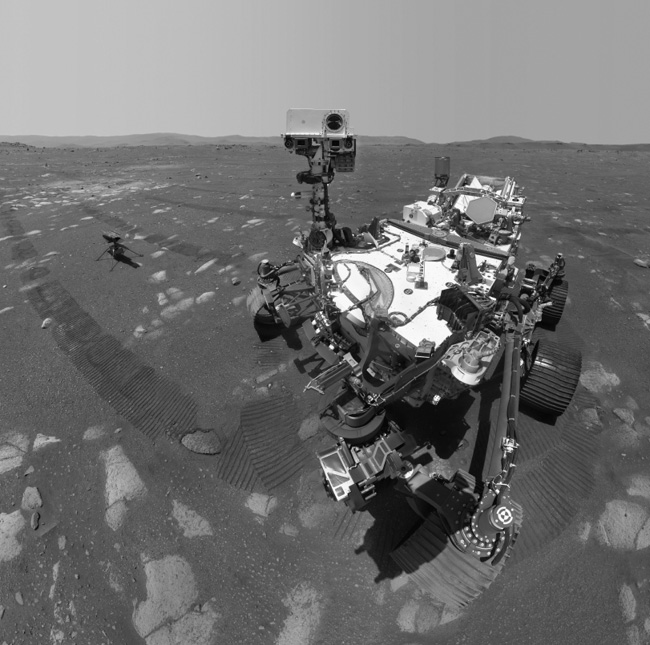
Selfie taken near the Jezero crater landing site using the NASA Perseverance rovers arm-mounted WATSON camera on April 6, 2021 (Mars 2020 mission Sol 46). The rover had just dropped off the Ingenuity helicopter (seen at left), which had been stowed under the rovers chassis during launch, landing, and early mission operations. The helicopter went on to make history eight sols later, becoming the first aircraft ever to make a powered, controlled flight on another world. NASA/JPL-Caltech/MSSS.
Discovering Mars

A History of Observation and Exploration of the Red Planet
William Sheehan and Jim Bell

The University of Arizona Press
www.uapress.arizona.edu
2021 by The Arizona Board of Regents
All rights reserved. Published 2021
ISBN-13: 978-0-8165-3210-0 (hardcover)
Cover design by Leigh McDonald
Cover illustration: Perseverance Guides Itself Towards the Surface, NASA/JPL-Caltech
Designed and typeset by Sara Thaxton in 10.25/15 Minion Pro (text), Montserrat, and Roboto (display)
Library of Congress Cataloging-in-Publication Data
Names: Sheehan, William, 1954 author. | Bell, Jim, 1965 author.
Title: Discovering Mars : a history of observation and exploration of the Red Planet / William Sheehan and Jim Bell.
Description: Tucson : University of Arizona Press, 2021. | Includes bibliographical references and index.
Identifiers: LCCN 2021012042 | ISBN 9780816532100 (hardcover)
Subjects: LCSH: Mars (Planet)Exploration.
Classification: LCC QB641 .S4835 2021 | DDC 523.43dc23
LC record available at https://lccn.loc.gov/2021012042
Printed in the United States of America
This paper meets the requirements of ANSI/NISO Z39.48-1992 (Permanence of Paper).
To Debb and Jordana, our guiding stars...
Contents
Foreword
Its a great pleasure to see this new book on Mars. It fills a need that Ive seen growing in the field for over thirty years now, which is for an integral history of humanitys studies of Mars that includes a full description of both the pre-Viking and the post-Viking era. Even though they are parts of the same story, these two eras are very different, and each complicated in itself, so that perhaps there has been no one person who is fully conversant with both. As Sheehan and Bell explain in their introduction, it is the combination of their two angles of approach that allows this book to tell the whole story, and their work of collaboration and integration has given us this special achievement.
Possibly the history of our study of Mars can be compared to looking at a landscape that has been hit by a meteor, by which I mean, the amount of information that came crashing into human knowledge by way of the Mariner and Viking missions to Mars was so huge that it tended to obliterate our awareness of what had existed before. Literally millions of times more data than we had ever had came to us in two great pulses in 1971 and 1976, and much of the work in areology after 1977 was devoted to sorting out what had just come pouring in. There was so much work to do in sorting out what we had been given by these missions that it perhaps did not matter that no further major missions visited Mars for the next two decades; there was already enough to do. But then more missions began to orbit Mars, and to land on it, and there have been enough of these in the years since 1996 that its very easy to get them confused, and lose sight of just how much more has been added to our knowledge, beyond what Mariner and Viking were able to tell us. By now more exponential leaps in the amount of data have accrued, and that in itself is hard to keep track of and understand.
So the shape of areology over time, in terms of information input, is strange, and needs sorting out. Before Mariner, we first had the long era of naked-eye observations. Certainly Mars has been part of human consciousness for as long as there have been humans, and perhaps even before; its brightness, redness, fluctuating intensity, and wandering course through the stars, with its little hitch, all brought it to the forefront of our attention from the very start, when we were regarding the night sky and wondering what it all meant. Then telescopes revealed the Red Planet as a disc with marks, no doubt a planet like Earth and the other planets; but how much like Earth, or how different, was difficult to tell. The amount we knew grew only a little with improvements in telescopes, but then astronomers brought other instrumentation to bear, so there were notable increases in information, and a number of changes in hypotheses, which make this early era in Mars studies a good demonstration of the scientific method in action, including paradigm shifts and, of course, the tendency to take a little bit of evidence and run a long way with it. This is a great story, and an important one to remember and keep clear in our history of areology, and thats one of the things this book does well.
Then came Mariner and Viking, and these two missions need to have their stories told too, as we also have here. What an extraordinary breakthrough in human exploration! Even now, despite the decades of subsequent missions with their ever-more-refined results, the story of these two landmark missions needs to be recalled and examined for what they can still teach us.
Then in the 45 years since Viking, beginning with the little landers of the late 1990s, we have seen a large number of extremely successful missions to Mars, both in orbit and on the surface. There have been so many of them that its easy for casual observers to lose track, and also perhaps not everyone has kept up with the latest results. Here too this book serves as a great guide. Even as we stand on the brink of yet more amazing exploration, these great expeditions need to be sorted out and their results explained. Its wonderful to have that.
Next page
